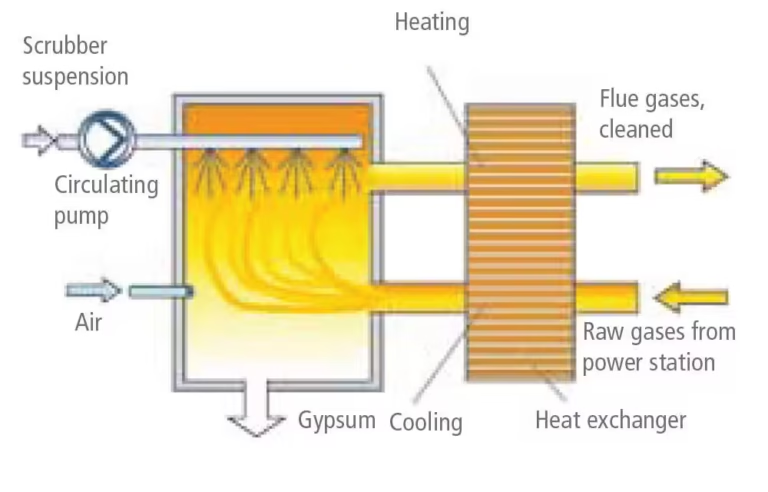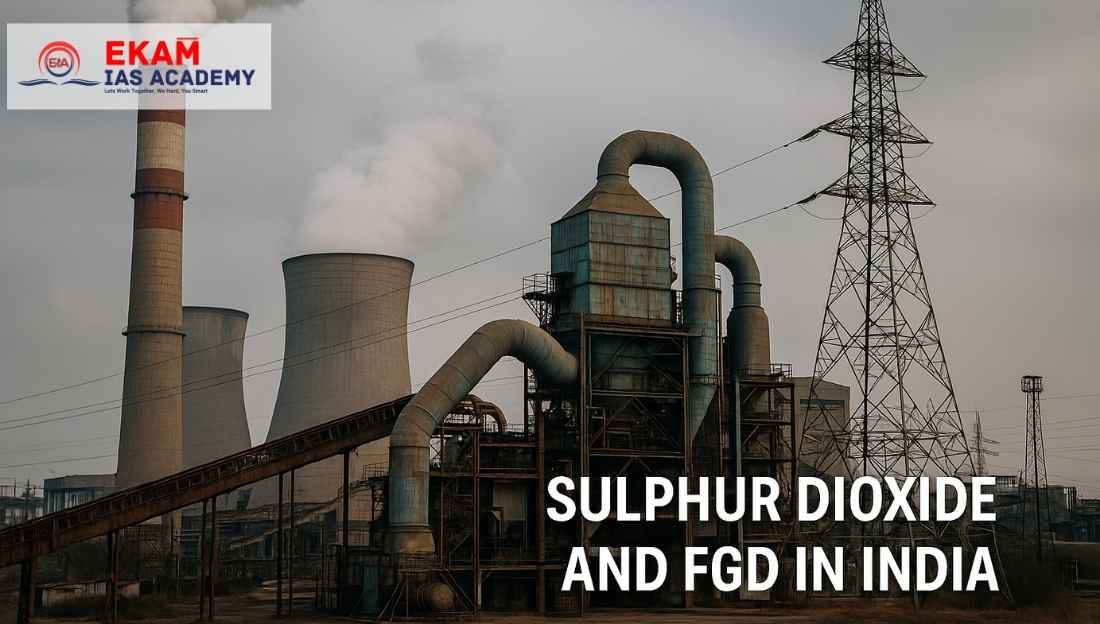Recent data from the Central Electricity Authority highlighted that several major power plants within 300 km of Delhi still operate without Flue Gas Desulphurisation (FGD) systems, which are essential for reducing Sulphur Dioxide (SO₂) emissions.
What is Sulphur Dioxide?
- Colourless gas with sharp, irritating odour (similar to a struck match).
- Highly soluble in water; forms sulphurous acid, contributing to acid rain.
- Widely used in chemical manufacturing, paper processing, metal treatment, and food preservation.

Sources of SO₂ Emissions
- Burning of fossil fuels, especially coal in power plants and industries.
- Copper, iron pyrite smelting and petroleum refining.
- Natural source: volcanic eruptions.
- Power plants are the largest contributors of SO₂ emissions in India.
Environmental and Health Impacts
- Causes asthma, bronchitis, and lung damage, especially in children and the elderly.
- Leads to acid rain, harming crops, soil fertility, and aquatic ecosystems.
- Reduces visibility and contributes to urban smog.
Flue Gas Desulphurisation (FGD)
- A pollution control method used to remove sulfur dioxide from exhaust gases of coal-based industries and power plants.
- Uses limestone, lime, or ammonia to neutralize SO₂.
- Essential for meeting National Clean Air Programme and emission standards of the Ministry of Environment.
Indian Initiatives
- FGD installation mandated for all thermal power plants by MoEFCC.
- National Clean Air Programme (NCAP) to reduce 40% SO₂ emissions by 2030.
- Perform, Achieve and Trade (PAT) scheme to improve energy efficiency in industries.
- Ujjwal DISCOM Assurance Yojana (UDAY) promotes sustainable power sector reforms.
Conclusion
The lack of FGD systems in major power plants reflects both regulatory delays and environmental negligence. Immediate action is essential to protect public health and meet India’s climate commitments.
This topic is available in detail on our main website.





